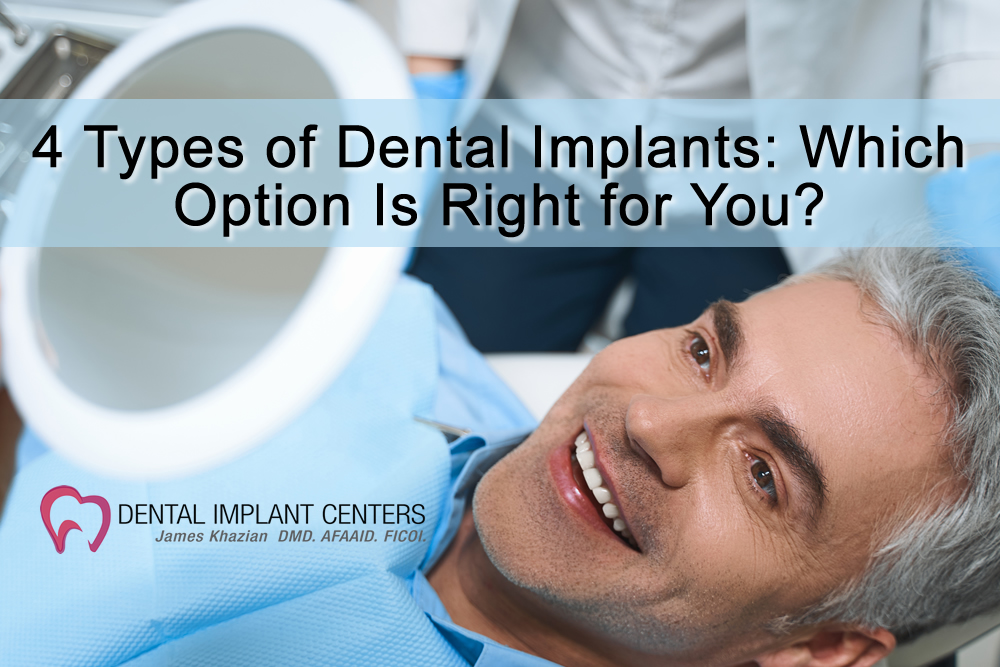Summary
Dental implants aren’t a one-size-fits-all deal. Whether you’re looking to replace a single tooth, a handful, or an entire arch, modern implant dentistry has crafted solutions just for you. From the widely embraced endosteal implants to specialized options like zygomatic or All-on-4®, today’s techniques open the door for nearly anyone to enjoy a strong, lasting, and natural-looking smile.
4 Types of Dental Implants: Which Option Is Right for You?
When you think about filling those gaps left by missing teeth, dental implants stand out as the shining beacon in today’s dental world. Unlike the old-school dentures or bridges that just sit there, implants dive deep—restoring not just the crown but the very root of the tooth. It’s like bringing back the foundation of a house, giving you stability, function, and—oh, that aesthetic appeal! But wait—did you know there’s a whole array of dental implants tailored for different needs? Each one crafted for unique bone conditions and treatment aspirations…
So, if dental implants are on your radar, let’s take a stroll through the four main types, how they operate, and who they’re best suited for.
- Endosteal Implants
Ah, the endosteal implants—the most popular kid on the block. These little wonders are surgically nestled right into the jawbone, acting as a sturdy artificial root.
Shape and material: Think of them as tiny screws, cylinders, or even blades—often forged from titanium, which is as tough as nails and friendly to the body.
Procedure: Once placed, they don’t just sit there; they fuse with the jawbone in a magical dance called osseointegration. After healing, you can attach a crown, bridge, or denture to this new root.
Best for: Those with a robust jawbone and healthy gums—basically, the lucky ones.
Why go for endosteal implants? They feel the most natural, offering stability and a long-term success rate that’s hard to beat. For many, this is the go-to choice when bone support isn’t a worry.
- Subperiosteal Implants
Now, let’s talk about subperiosteal implants. These are a bit different sitting under the gum but above the jawbone, rather than diving in.
Design: Picture a metal framework snugly resting beneath the gum tissue, with posts peeking through to hold the replacement teeth.
Procedure: These are typically for those who lack enough healthy bone and might not be candidates for bone grafting.
Best for: Folks with shallow jawbones who’d rather skip the bone augmentation hassle.
Why choose subperiosteal implants? They dodge the bone grafting drama, making them a decent option for those with a weaker bone structure, though they’re not as common nowadays as their endosteal cousins.
- Zygomatic Implants
Now, zygomatic implants—these are the heavyweights, used in rare situations where traditional implants just won’t cut it due to severe upper jawbone loss.
Placement: Instead of anchoring into the jawbone, these implants are surgically placed into the cheekbone (the zygoma), which is denser and offers a solid grip.
Procedure: Because of their complexity, zygomatic implants require a skilled oral surgeon and often serve as an alternative to bone grafting in the upper jaw.
Best for: Those grappling with significant upper jawbone loss who can’t support the usual implants.
Why opt for zygomatic implants? They eliminate the need for grafting and can provide immediate support for replacement teeth—though they’re reserved for those complex cases.
- All-on-4® Dental Implants
And then there’s the All-on-4® technique—a game-changer for anyone who’s lost most or all of their teeth.
How it works: Instead of a separate implant for every missing tooth, just four strategically placed implants in the jaw hold up a full arch of replacement teeth.
Procedure: The back implants are angled for maximum stability, even when bone density is a bit lacking. In many instances, patients can walk out with their implants and replacement teeth on the same day—often dubbed “Teeth in a Day.”
Best for: Those facing complete tooth loss or anyone looking for a quicker, more budget-friendly solution than replacing teeth one by one.
Why choose All-on-4® implants? They deliver a full, natural-looking smile in record time, with fewer implants and less invasive procedures. It’s a fantastic way to restore function and confidence in a flash.
Choosing the Right Dental Implant
So, which implant is your best bet? It hinges on a few key factors:
- Bone density and structure
- Overall oral and general health
- Number of missing teeth
- Budget and treatment goals
A skilled implant dentist or oral surgeon will conduct a thorough evaluation—think X-rays or 3D scans—to guide you toward the best option.
Final Thoughts
Dental implants aren’t a one-size-fits-all deal. Whether you’re looking to replace a single tooth, a handful, or an entire arch, modern implant dentistry has crafted solutions just for you. From the widely embraced endosteal implants to specialized options like zygomatic or All-on-4®, today’s techniques open the door for nearly anyone to enjoy a strong, lasting, and natural-looking smile.
So, if you’re even slightly considering implants, why not schedule a chat with a seasoned implant dentist? With the right implant, you can reclaim your oral health, confidence, and quality of life for years to come… or maybe even decades.
For more information about dental implants, all-on-4, all-on-6, bone grafts, sinus graft, full mouth reconstruction, snap on dentures, and cosmetic dentistry, you may request a free consultation with Dr. James Khazian by clicking here or call 866-4my-smile (866-469-7645).


